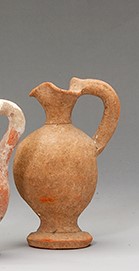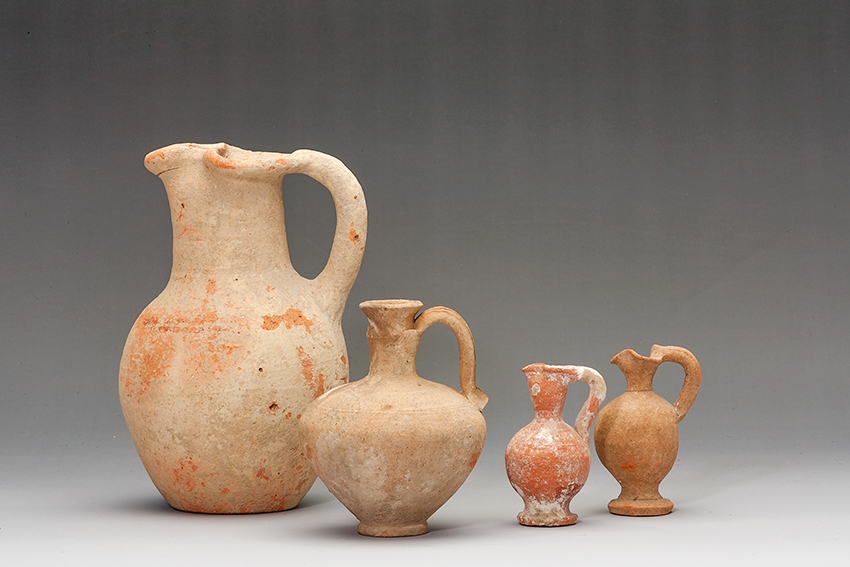Acquisition number: 2009.03
Intact but for some wear to the surface. Rough orange clay. Similar to the last but the mouth and neck were probably made separately, leaving a step at the junction with the shoulder. The handle is of roughly circular section. The wall is indented below the lower handle root through an error when the handle was applied. There is a step between stem and foot; the underside of the foot is flat. No paint is preserved.
Title: Miniature Oinochoe (Orange) - 2009.03.7
Acquisition number: 2009.03
Author or editor: J.R. Green
Culture or period: Punic.
Date: Phases V-VI: Late Hellenistic to Early Roman.
Material: Clay - Terracotta
Object type: Vessels - Jug/wine jug
Dimensions: 100mm (h)
Origin region or location: Malta
Display case or on loan: 2
Keywords: Maltese, Punic
C. Sagona, Mediterranean Archaeology 9-10, 1996-97, 41-42 no. 9.
2009.03.7
Miniature Oinochoe (Orange)
Ht 10cm.
(Parliament of Australia inventory number 01/0069.004)
Intact but for some wear to the surface. Rough orange clay. Similar to the last but the mouth and neck were probably made separately, leaving a step at the junction with the shoulder. The handle is of roughly circular section. The wall is indented below the lower handle root through an error when the handle was applied. There is a step between stem and foot; the underside of the foot is flat. No paint is preserved.
Sagona places the piece in Phases V-VI: Late Hellenistic to Early Roman.
C. Sagona, Mediterranean Archaeology 9-10, 1996-97, 41-42 no. 9.
Parliament of Australia.
Parliament Dr, Canberra ACT 2600.

